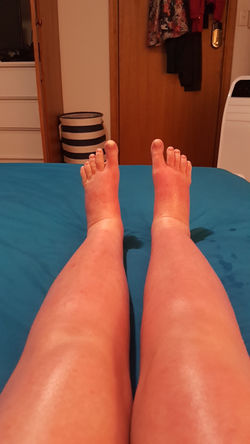What Does DRESS Syndrome Look Like?
DRESS Syndrome isn't pretty, but it's important to know what it looks like. Most patients develop a
maculopapular, pruritic rash that may affect the face, upper trunk, and arms and legs. The rash can begin on the trunk and move down the body and eventually develop into severe exfoliative dermatitis. Parts of the skin may become purple and bruised-looking during the course of illness. Edema (swelling) of the face and extremities will often present in the acute phase of DRESS, and jaundice (yellowing of the skin) is often seen due to liver injury.
While these are the visual cues for DRESS, the most dangerous damage is done internally where it can't be seen. Even after patients stop the medication and the rash and edema subside, the organs can progressively get worse. We must look beneath the skin to evaluate for these signs.
DRESS is a progressive and varied condition. Not all symptoms will appear at once and not all patients will experience every symptom.
DRESS Syndrome Rash
An early sign of DRESS, rashes may be itchy and painful, and may vary in presentation. The rash usually progresses through the course of illness, moving from the trunk to the extremities.


















Facial Edema (Swelling)
Facial edema is a hallmark sign of DRESS that typically presents within the first few weeks of illness. Some patients will have a facial rash along with swelling, others will not.









Skin Exfoliation:Peeling/Shedding
Skin exfoliation may occur after a rash and involve any body part. Some may have "sheets" of skin peel off at times.









Additional Images of DRESS Syndrome
 Swelling of hands |  Swelling of legs |  Swelling of feet/ankles |
|---|---|---|
 Hair loss many months into recovery |  Hair loss |  Hair loss |
 Stages of facial rash, edema, and peeling. |  Monitoring DRESS patient in hospital. |  Hospitalized with skin injury due to DRESS |
